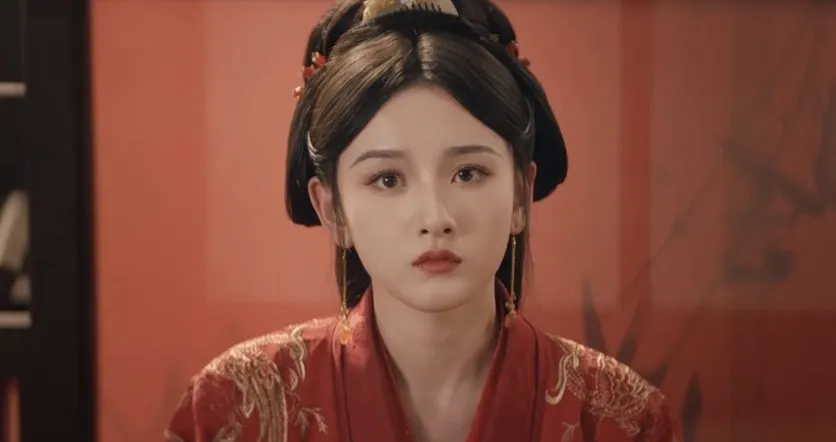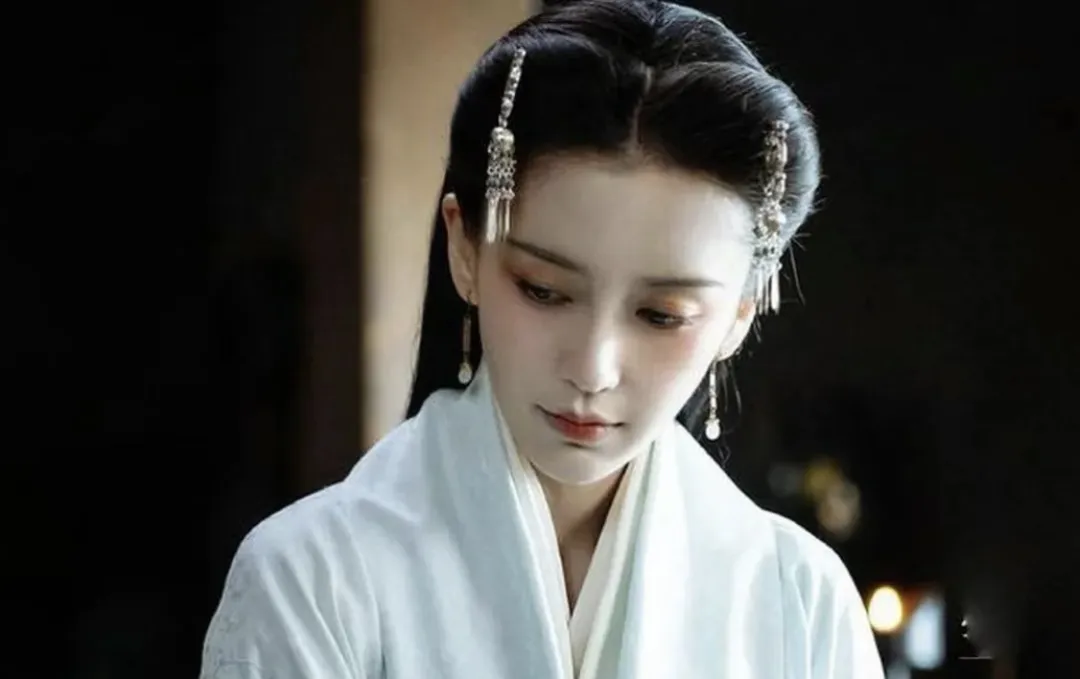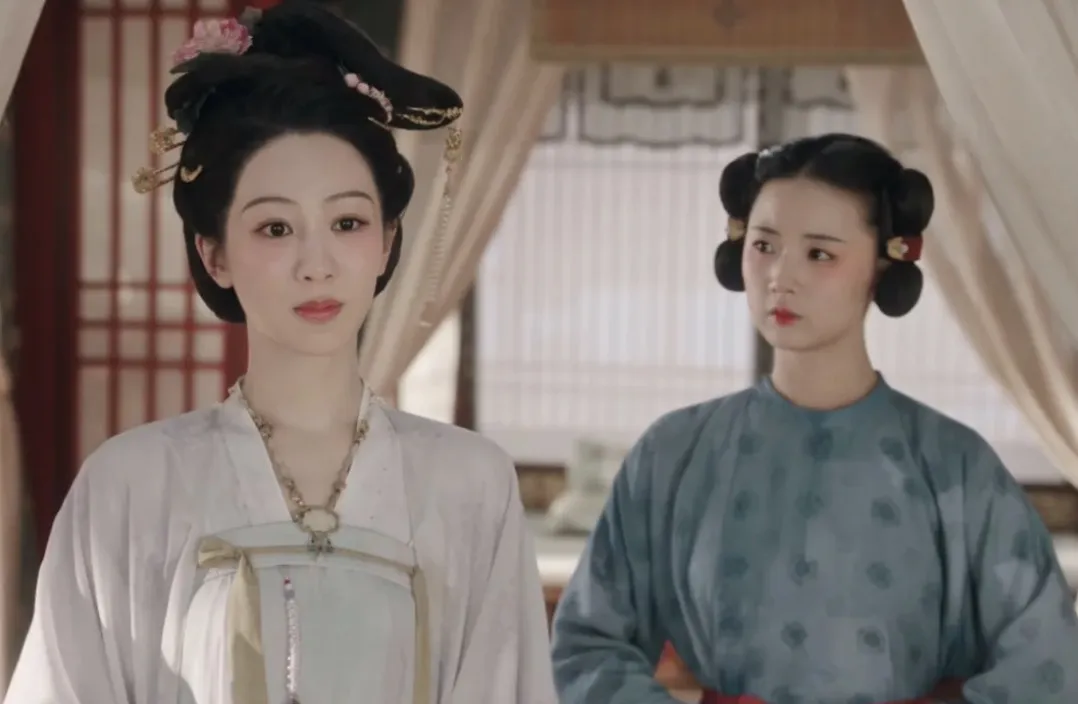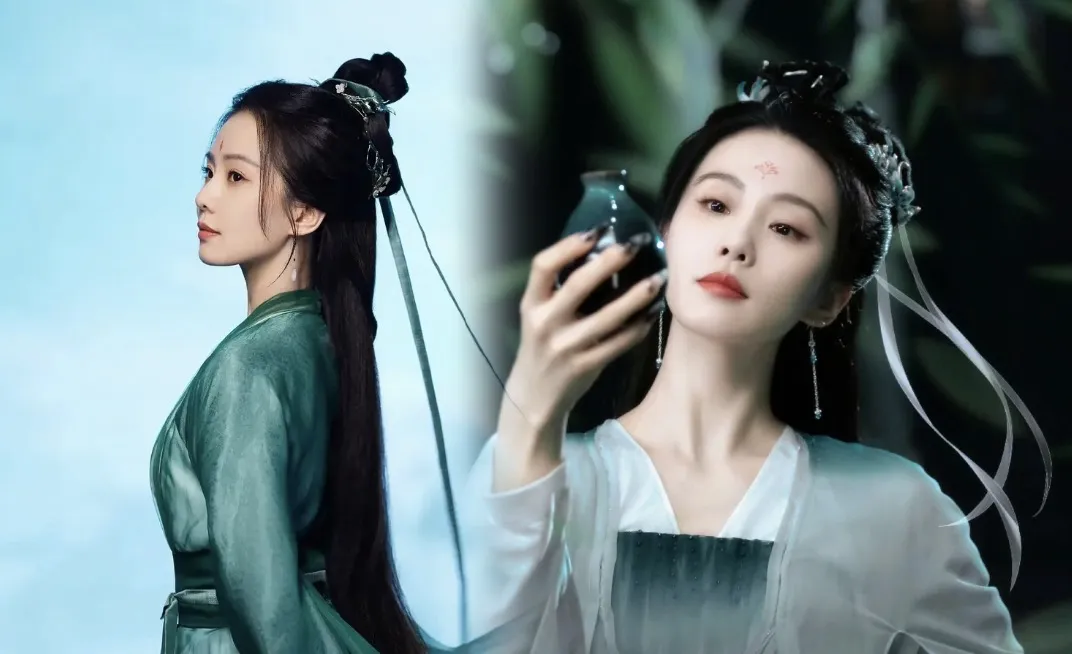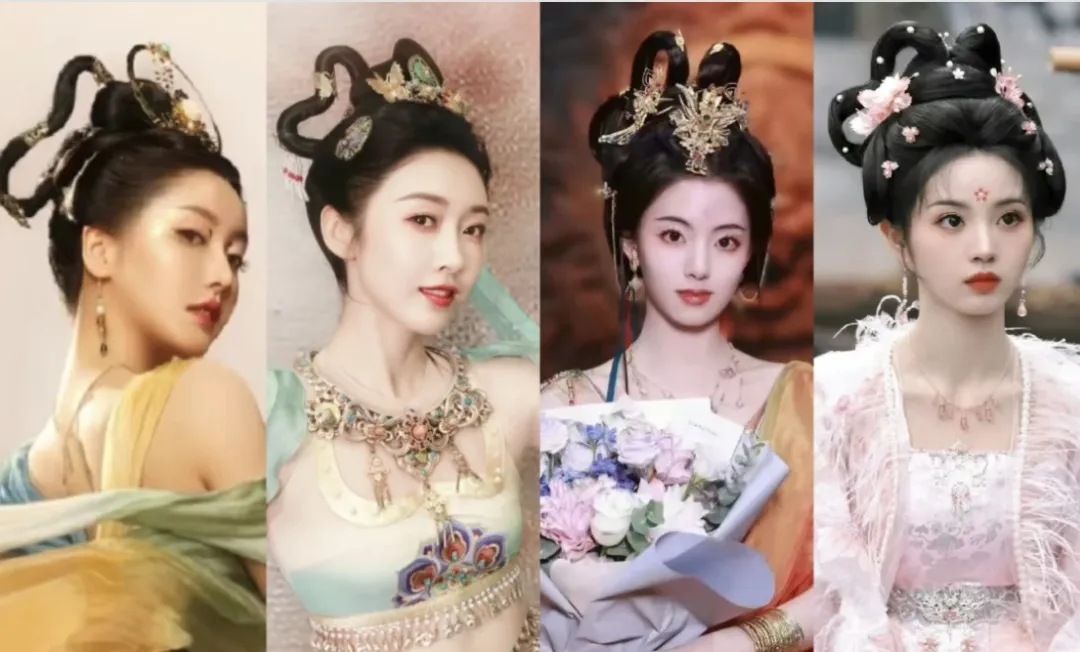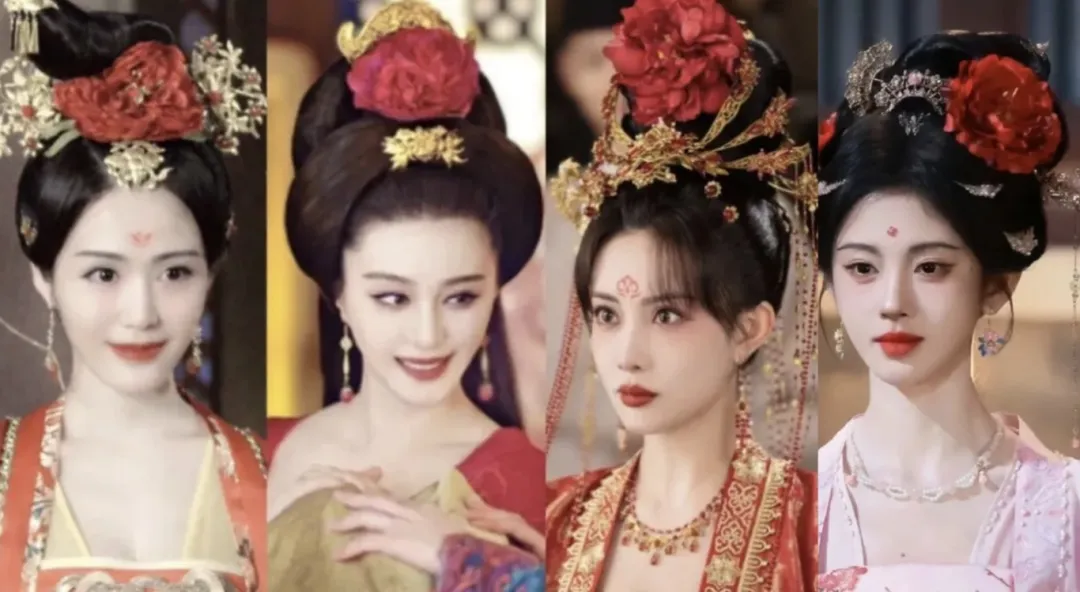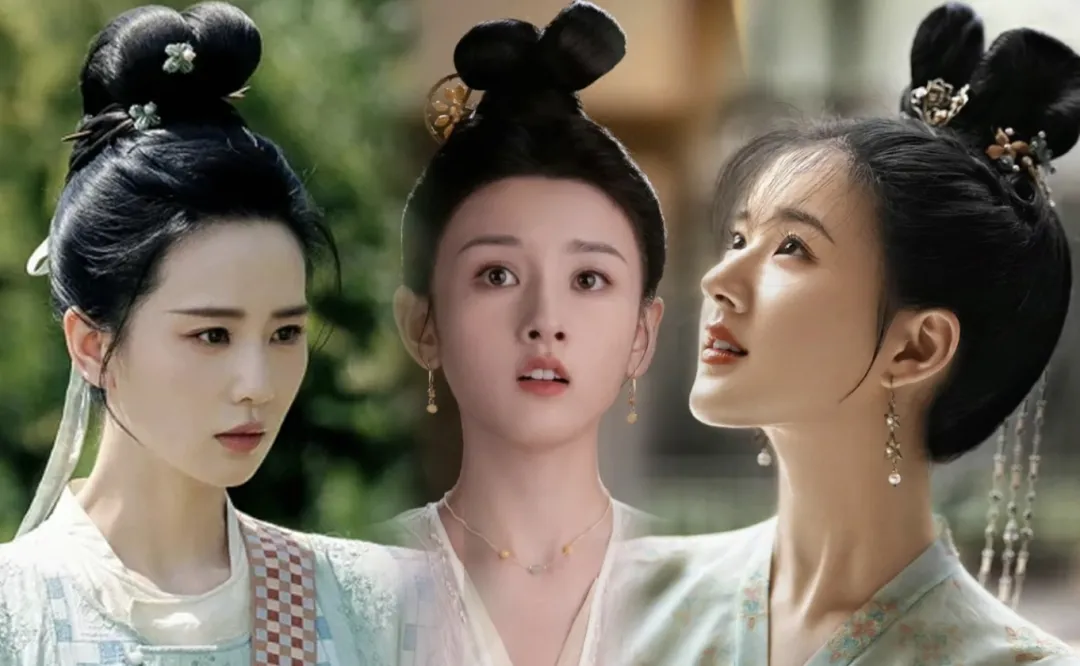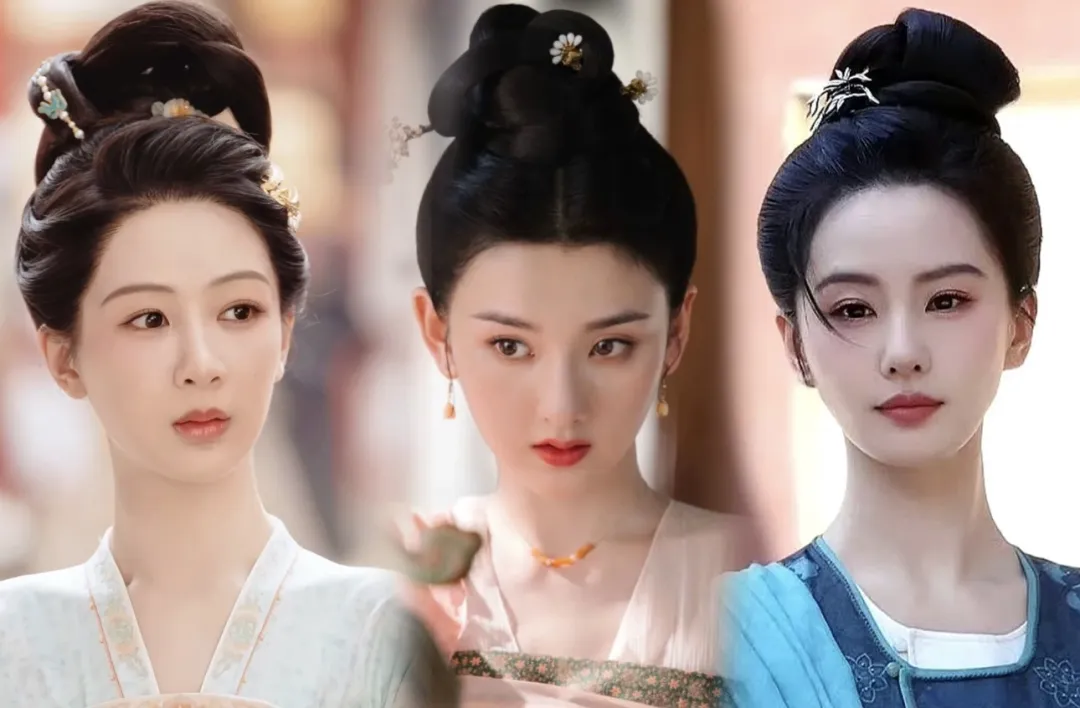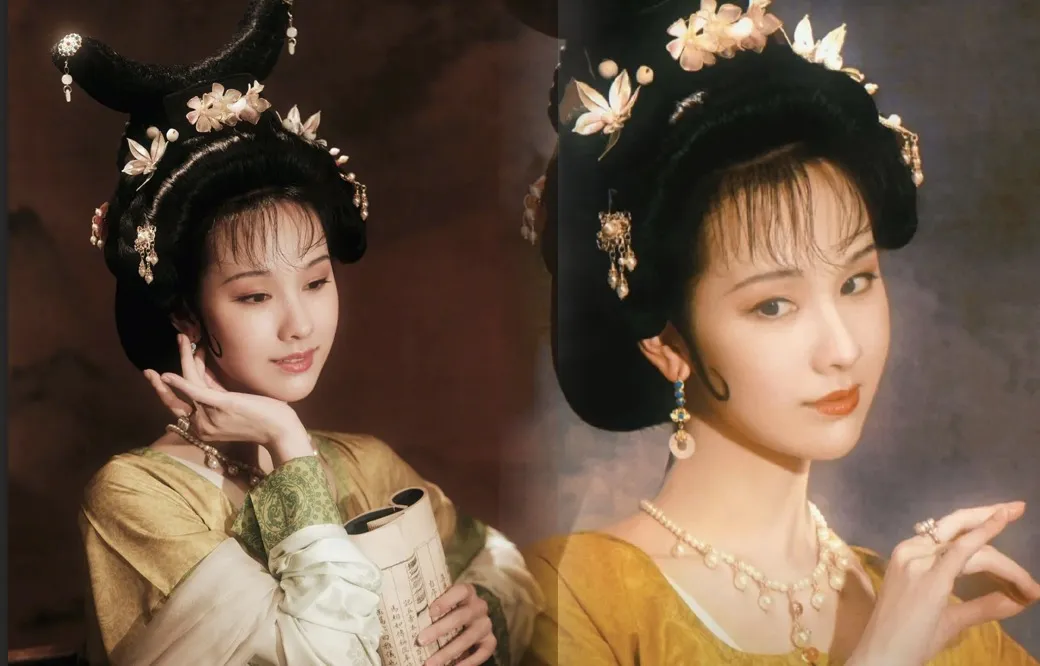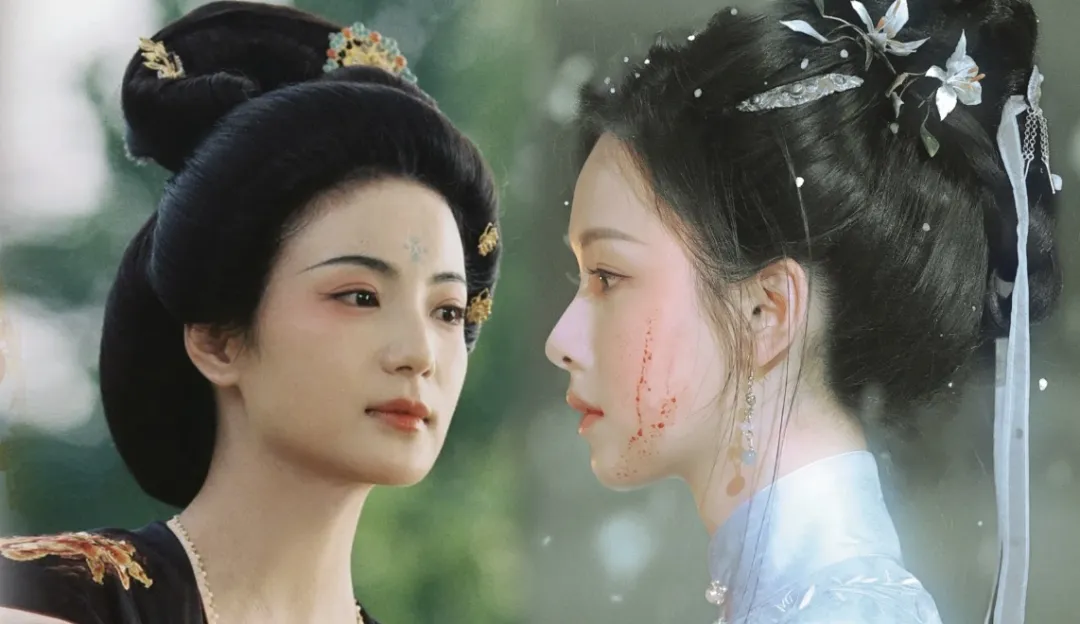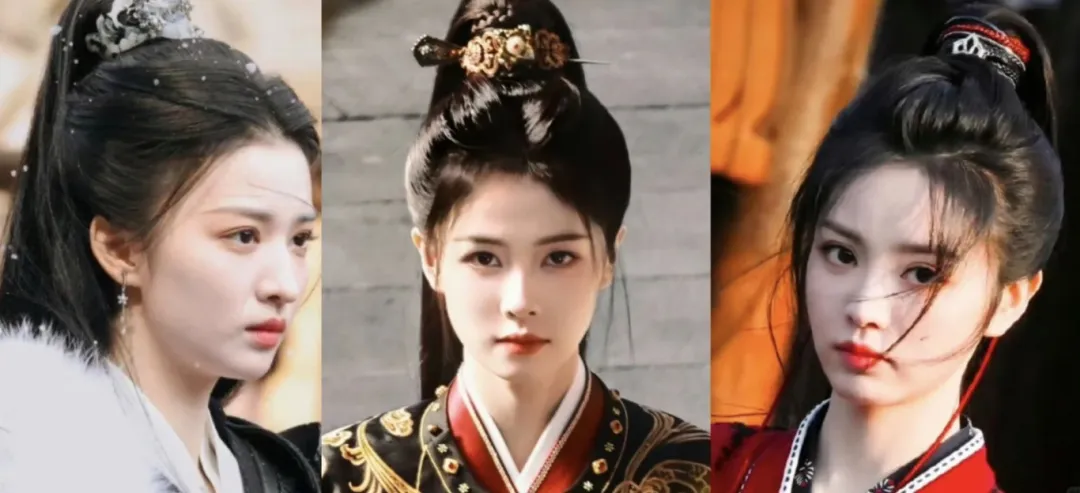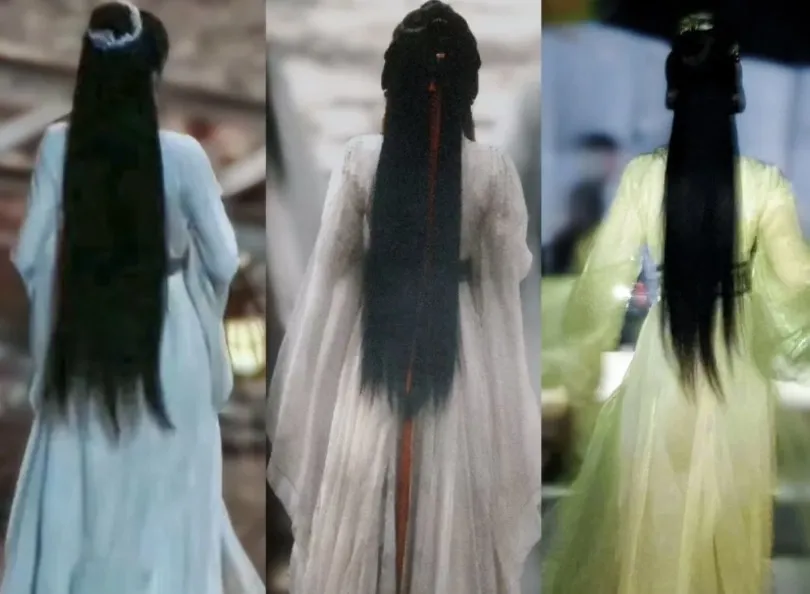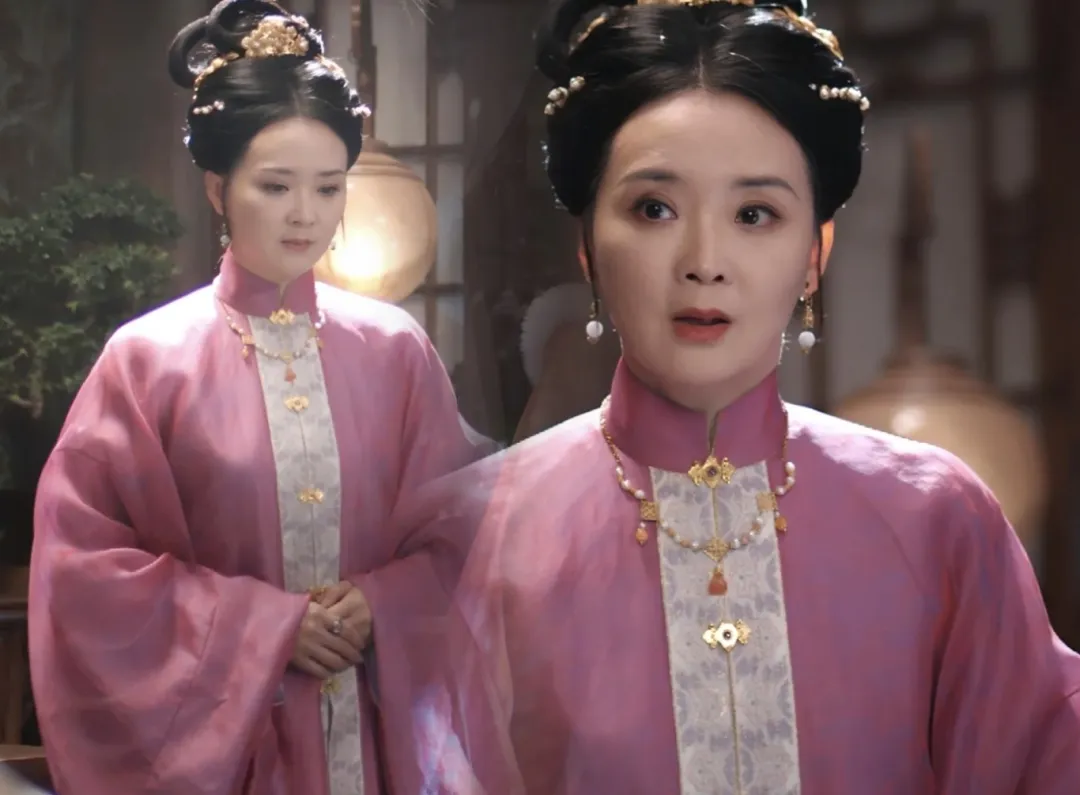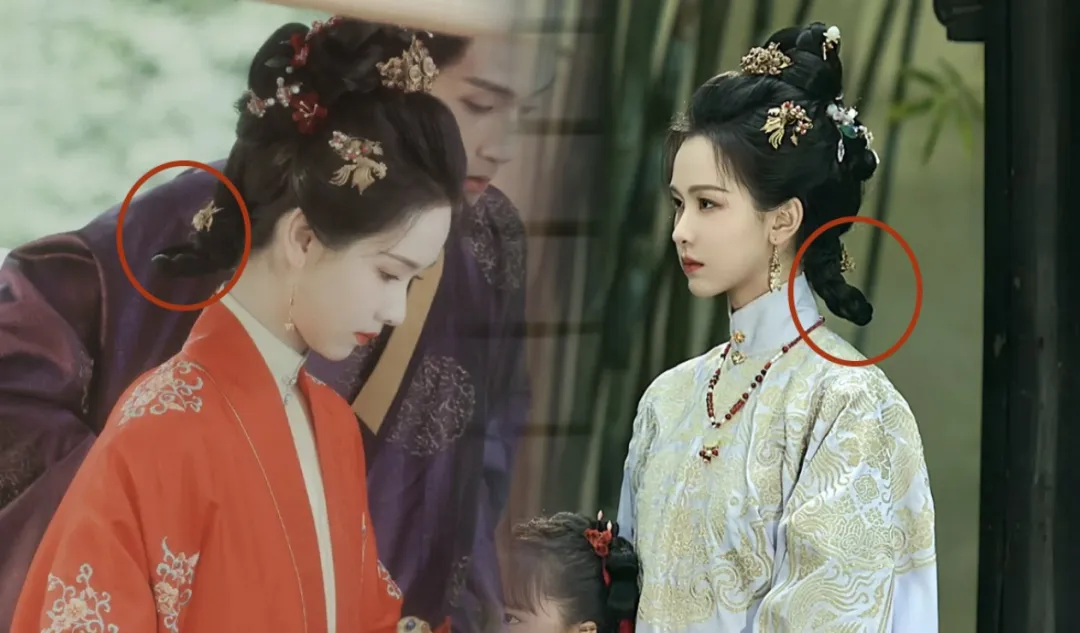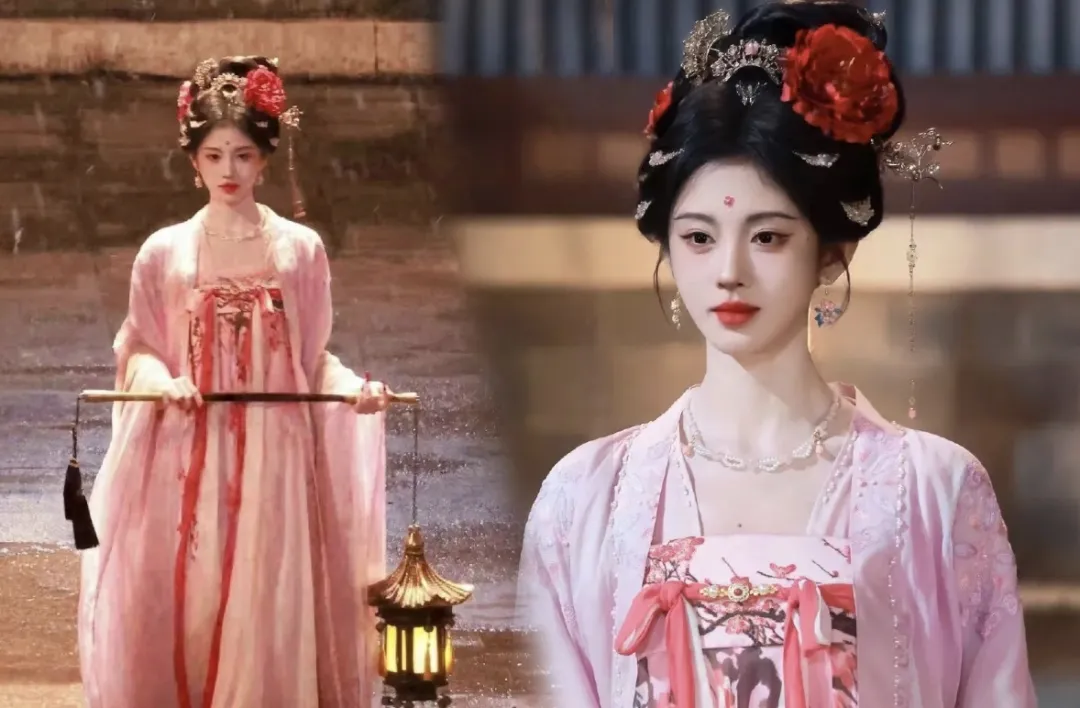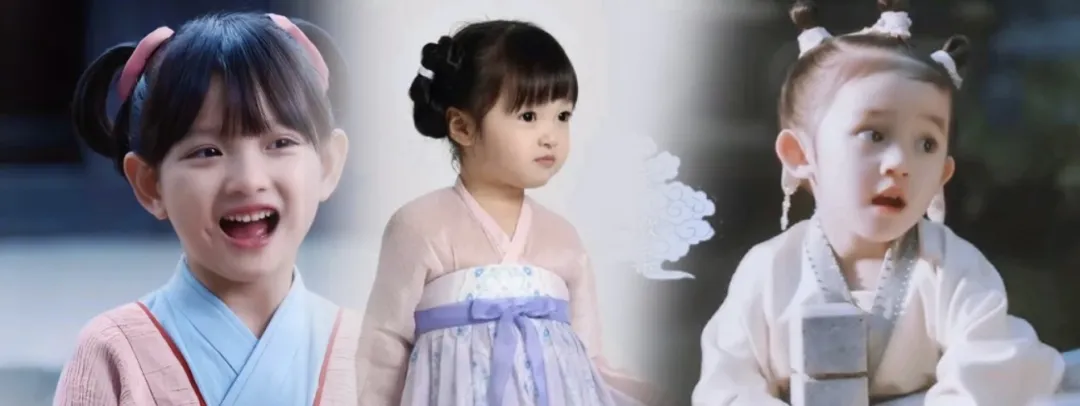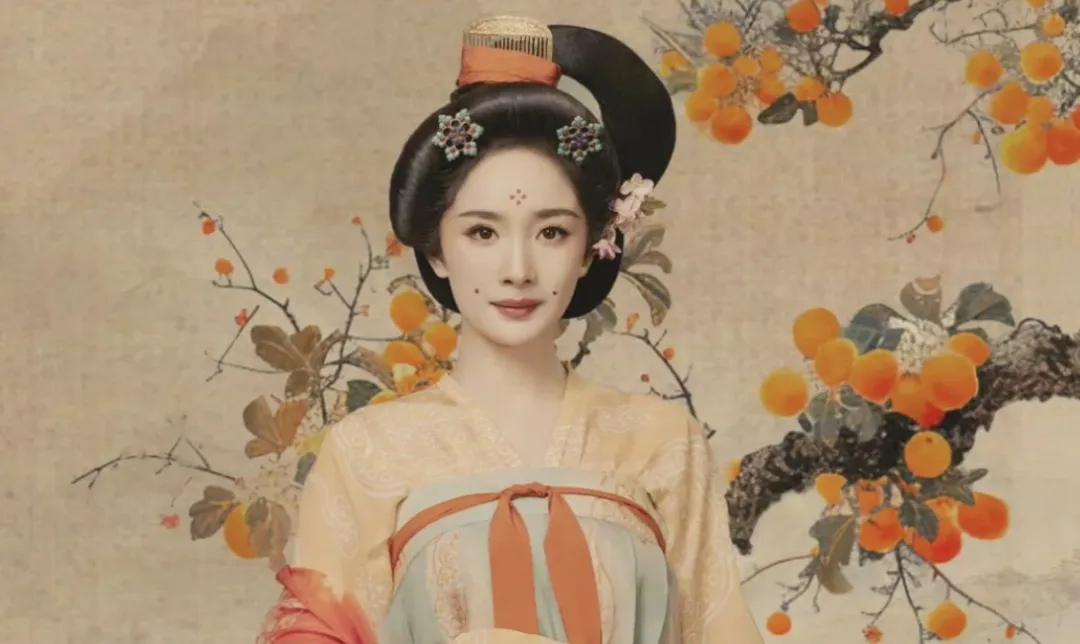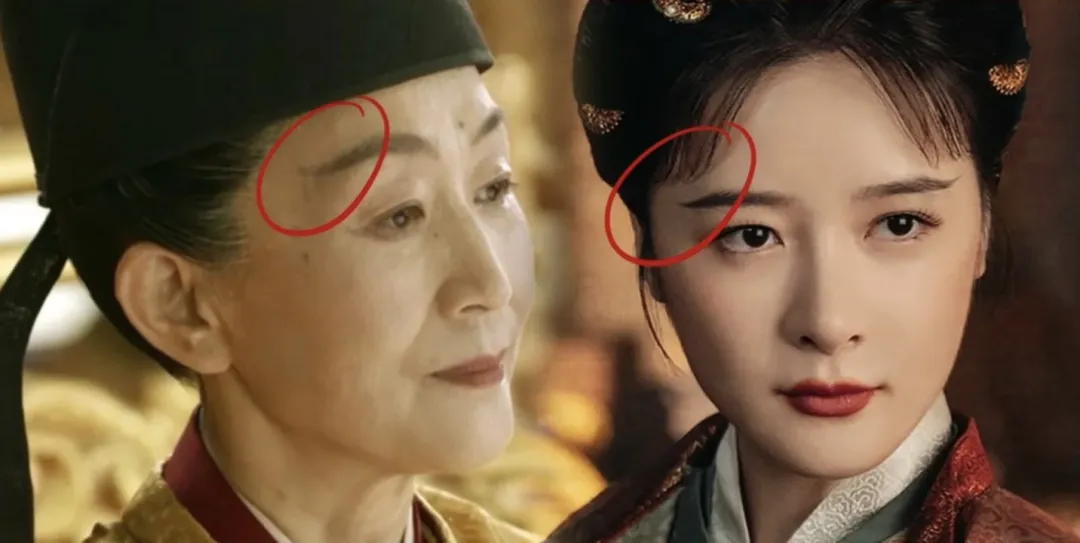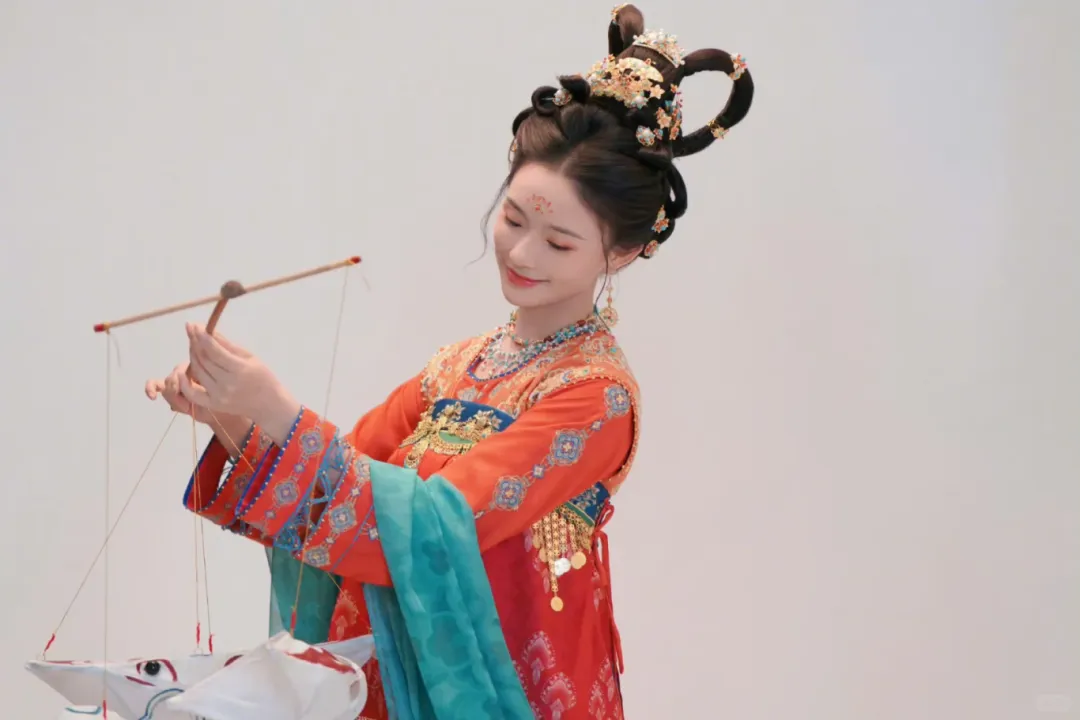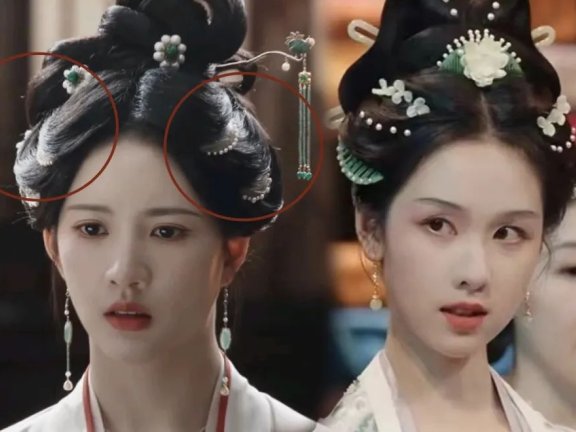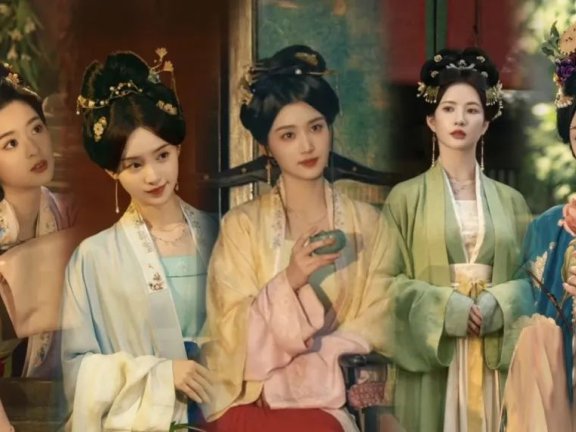-
Song Zuer's Iconic Curved Eyebrows
Song Zuer's eyebrows are truly iconic! In ancient - costume TV dramas, her Han - style makeup and styling as Xiao Qiao have once again won praise from netizens. Chinese classical eyebrow shapes are incredibly appealing! Let me first state that this kind of eyebrow shape is called a "curved eyebrow" in ancient times. It's one of the traditional eyebrow shapes that enjoyed the longest popularity in ancient China. The main features of the curved eyebrow are thick at the brow head and thin at the brow tail. The brow head gently rises to the brow peak and then smoothly falls. The boundary of the eyebrow shape is indistinct, and the color is like a stroke of ink, lighter at the brow head and darker at the brow tail, exuding a sense of fragility. Some netizens dug out Song Zuer's childhood look as Nezha, which also had thick curved eyebrows. They joked that even her eyebrows have grown proportionally! Now, about curved eyebrows, it's a general term. Any eyebrows with a curve can be called "curved eyebrows". Logically, the classic willow eyebrows in history are also a type of curved eyebrows. The willow eyebrows are thinner and longer than the… -
Why Do Han Dynasty Cdramas Feature Small Lips?
In ancient Chinese dramas inspired by the Han Dynasty style, it's common to see that women regarded small lips as beautiful. Even in the styling of Song Zuer in the drama Zhe Yao, netizens exclaimed that Song's small lips are indeed suitable for Han - Dynasty women. Is it really the case? First, the conclusion: Han - Dynasty women generally considered small lips beautiful. Even if they didn't have small lips originally, they would paint them to look small. The makeup technique was to first apply white powder to cover the original lip color, and then use lip rouge to draw a round lip shape. The larger ones were like cherries, the smaller ones were like beads, or just one - circle smaller than the original lip shape. So this way of painting small lips is also called "dotting the lips". However, it's not absolute, and there was also the full - lip makeup method. This lip shape was generally small, creating a sense of hierarchy in the lip makeup, making the otherwise simple makeup more memorable and also reflecting the gentle personality of Han - Dynasty women. The strong covering ability of the white powder allowed the lip shape… -
How to Distinguish Maids from Young Ladies in Cdrama?
What exactly do the hairstyles that can clearly distinguish between young ladies and maids look like at a glance? In some current period cdramas, it's really hard to tell who is the young lady and who is the maid because the basic hairstyles and clothing of maids and young ladies are almost the same, with only the difference between a simplified version and an elaborate one. Some maids even dress more 'formally' than the young ladies. Clothing Styles Regarding the maid's styling, although clothing styles have changed over dynasties, hairstyles and hair buns have changed less. Maids' clothing mainly consists of segmented dresses and round - collar robes, presenting a distinct image difference in ladies' paintings. Usually, we can distinguish their dressing styles from ancient paintings, but it's not absolute. Maids mostly wear dresses and trousers inside. In the Tang and Song Dynasties, round - collar robes/shirts were popular, but they became less common after the middle of the Ming Dynasty. In the Tang Dynasty, maids' round - collar robes were looser, with wide sleeves, and a belt was often used to cinch the waist. The colors were bright and eye - catching, and their heads were decorated with various… -
Why Ancient Cdramas Frequently Use Headbands for Styling?
No matter which ancient - cdrama it is, there's always a headband on or behind the character's head. This seemingly simple headband can make the wearer look graceful and full of Chinese charm. How can such a simple accessory be so appealing? Let me state my view first. This headband is extremely common in TV dramas and Hanfu makeup and styling. For instance, Liu Shishi (刘诗诗) often sported headband looks in the ancient - costume drama Huai Shui Zhu Ting (淮水竹亭). Although we usually just call it a "headband", it actually has multiple names. Let's briefly sort out its common names and wearing methods. Netizens joke that this headband is like a veteran actor, as it appears in every ancient - costume drama with excellent "acting". One of its names contains a character that's difficult to write (a character composed of "xu" on top and "jin" at the bottom, pronounced "xu", meaning a hair rope). According to Zhu Zi's Family Rituals (朱子·家礼), for mourning women, the "xu - jin" is a piece of slightly thin linen about eight inches long, used to tie the hair roots with the rest hanging at the back. In the Song Dynasty's Records of the… -
Why Are Double-loop Bun Hairdos So Popular in Cdramas?
Why do fairies in ancient costume dramas always have two loops on their heads? It seems that in the ancient costume dramas I watched as a child, fairies all sported this hairstyle. Usually, there are two loops, but there can also be multiple loops. What's the name of this hairstyle? Let me give the answer first. This hairstyle is called the Double-loop (Bun) Immortal-worshipping Hairdo, which evolved from the Double-loop Hairdo. "Bun" and "loop" are interchangeable, just different terms. The Double-loop Hairdo was originally a hairstyle for young girls, and multiple loops can also be collectively referred to as "Bun Hairdos". But perhaps because it's so beautiful, this hairstyle also frequently appears in paintings of immortals, such as the famous ancient painting The Nymph of the Luo River and The Scroll of Eighty-seven Immortals. Since then, the fashion has spread throughout history. Because it's the hairstyle of fairies, people weren't satisfied with the traditional name of the double-loop and gave it a new name, "Immortal-worshipping Hairdo". As the name suggests, "this style can only be found in the heavens". Evolution of the Hairstyle You can see that there's an evolutionary context from the traditional Double-loop Hairdo to the Double-loop Immortal-worshipping… -
Why Is the Big Flower Hairdo Rarely Seen in Cdramas Now?
In early period cdramas, especially those with Tang-style costumes, this kind of big flower hairdo was often seen. But why is it less common today? Well, now there are more references from cultural relics, offering a wider range of options for hair and makeup styles. However, the association between the Tang Dynasty and wearing big flowers still persists as a stereotype in most people's minds. The Tang people's fondness for wearing peonies in their hair was closely linked to their love for these flowers. Peonies are so rich and magnificent, and some rare varieties are extremely precious. Only by wearing a whole peony could one show their status. Moreover, once a peony was worn, there was no room for other flowers, leading to the popular custom of wearing a single big flower on the head. Additionally, when the Tang people styled their hair in the 'big head style', there was some empty space on the head, so a big flower wouldn't look overly 'garish'. The most famous example is the Ladies with Head - flowers (簪花仕女图), which clearly shows this kind of adornment. This hair - flower - wearing custom reached the peak of fashion in the prosperous Tang Dynasty.…- 1
- 0
- 62
-
The Origin and Styles of the Chinese Rabbit Hairstyle
What's the name of the rabbit - like hairstyle on Song Zuer's head? In ancient - costumed dramas, we often spot this kind of rabbit - like hair bun, which netizens lovingly call the 'rabbit hairstyle'. What's its origin? Why do female stars adore it? Let me share the conclusion first. This hair bun resembling rabbit ears can generally be called 'double buns'. Double buns are a general term for two buns. Looking into specific styling details, they can also be named 'Lily Buns', 'Intertwined - heart Buns', etc., all styles of double buns. There's a gap in the middle or they're crossed, and it was a popular hairstyle in the early and prosperous Tang Dynasty. We can see it in many TV dramas, usually paired with Tang - style Hanfu, like the chest - high shirt and skirt, showing simplicity and vitality, as well as a girlish charm. According to 'Zhonghua Gujin Zhu' by Ma Gao of the Five Dynasties, the Lily Bun was very trendy during the Zhenguan period: 'During the Zhenguan period, people combed the Submissive Bun. Also, Yang Yuhuan combed side buns and did the crying - makeup. There were also the Sorrow - coming Bun,…- 0
- 0
- 58
-
The Diverse Tang Style Hairstyles
Finally, Tang - style hairstyles are no longer confined to the all - too - familiar big - head look! When we now mention the restoration of Tang - style, we often associate it with the elaborate big - head look and intricate head ornaments. In fact, this exaggerated style was not the only one in the Tang Dynasty. Many daily - life hairstyles are more amiable. For example, in the TV drama Wu You Du (无忧渡), Song Zuer's hairstyles throughout are more minimalist. Let's first note that the Tang Dynasty was a highly inclusive era. It not only had the characteristics of the Central Plains but also incorporated those of the Western Regions. There was the capable and tall style in the early Tang and Wu Zhou periods, the elegant and luxurious style in the prosperous Tang, and the elaborate and high - profile style in the middle and late periods. And according to different scenarios, there were grand makeup and hairstyles for formal occasions, and simple and capable ones for daily life. Although each era has its own characteristics, most daily - life hairstyles in the Tang Dynasty were mainly simple buns. Now, we can see various Tang…- 1
- 0
- 65
-
Chen Duling's New Makeup Style
Recently, Chen Duling specially shot a set of costumes in the style of 1980s ancient - costume dramas, which left netizens hardly recognizing her. Some even wonder: Is there really such a significant aesthetic difference between classical makeup and modern makeup? Let's start with the conclusion. The biggest difference between them lies in the 'charm'. Most of the so - called classical makeup adheres to the traditional aesthetic standards for eyebrow and lip shapes, presenting a classical charm. In contrast, modern makeup is mostly the result of integration under the influence of various trends, like the once - popular Korean and European - American styles, with a style leaning towards modern simplicity and fashion. This charm, though abstract, can be expressed in forms. For example, the makeup and styling of the 1987 version of A Dream of Red Mansions are often regarded as a classic because its style shows a harmonious beauty. Here, harmony means that the proportion of a person's eyebrows and eyes complements the makeup, without being obtrusive, and the colors are warm - toned. So, the reason why classical makeup is enduringly attractive is the grasp of this sense of harmony. The most challenging part of classical…- 0
- 0
- 19
-
Did Ancient Times Have Realistic Wig Technology?
In historical Cdramas, we often come across women sporting exaggerated and voluminous hairstyles, like the Ming-style makeup in When the Wild Geese Return and the Tang-style makeup in The National Beauty and Fragrance. Netizens can't help but wonder: Did ancient people really have such astonishing hair volume? The answer is no. It wasn't necessarily that ancient people naturally had thick hair. In reality, their hair density might not have been as depicted in films and TV shows. Instead, they wore wigs, known as "Yiji" (义髻) in ancient times, which were the forerunners of modern hairpieces. The trend of wearing wigs started among upper - class women. Their goal was to add volume and create more elaborate hairstyles, similar to today's hair extensions. The materials for Yiji were diverse. It wasn't limited to human hair (which was costly) but also included thin wood shavings, horsehair, etc. Generally, Yiji were made from hair or wood - based substitutes. For example, the lacquered wooden wig unearthed from the Astana Tombs in Turpan, Xinjiang, is a standard 'Single - Blade Half - Turned Chignon'. It's made of wood, painted black, and decorated with white - painted flowers, auspicious clouds, and phoenixes. The base has… -
Why Are Heroines in Cdramas Always Using Same Ponytails?
It's unclear when it started, but almost all heroines and heroes in ancient - costume dramas now sport high ponytails, and the 'armor battle - damaged makeup' trend has also become popular. Netizens point out that high ponytails can actually hit the face during martial arts practice, which is quite painful. The mass replication of high ponytails and battle - damaged makeup not only risks causing visual fatigue but also likely puts pressure on makeup artists and stylists to create unique variations. Let's revisit the costume drama styles of 50 years ago. The most classic is arguably the image from A Touch of Zen. In 1970, actress Xu Feng starred in A Touch of Zen, which catapulted her to fame and established her cold yet glamorous 'heroine' persona. Her character design featured a high bun, often paired with a headscarf or hat. Over her 15 - year screen career, she appeared in about 50 films, all as a heroine. This sleek attire and hairstyle conveyed an independent, self - reliant, and powerful image. Looking at other classic films, heroines rarely wore ponytails. Even with updos or half - updos adorned with accessories, the styling showcased distinct personalities while still emphasizing…- 0
- 0
- 69
-
Why Costume Dramas Feature Loose Hair?
Why Do Costume Dramas Always Feature Loose Hair? In TV dramas, we often see characters with 'loose hair' styles, including half - down hairstyles. For ancient people, when was it necessary to tie up their hair? What were the customs around this? The conclusion is that both men and women were expected to tie up their hair in public after reaching adulthood. Many dramas wrongly assume that unmarried women can have loose hair and married women should tie it up. According to traditional etiquette, hair should be tied up after coming of age. Ancient coming - of - age ceremonies were closely related to hairstyles. For men, it was 'Guanli (冠礼)', and for women, 'Jili (笄礼)', also known as 'Shangtouli (上头礼)'. Records show men had Guanli at around 20, and women had Jili at about 15. For women, the Jili, also called 'Jiaji (加笄)' or 'Shangtouli', involved parents or elders tying up their hair and adding a hairpin, symbolizing adulthood and eligibility for marriage. As Confucian texts state, 'A woman promised in marriage is honored with Jili and given a courtesy name.' In Confucian ideology, wearing loose hair after adulthood was seen as barbaric or a disregard for rituals. The… -
Wang Yan's Feihong Yanzhi Makeup
In the TV series When the Wild Geese Return, Wang Yan's character Aunt Zhou once said that wearing crimson red brightens the complexion. It seems she was right. In traditional Chinese colors, red is the most complexion - enhancing. Whether it's the bright red of the New Year or the peach pink of young girls, it brings to mind the vibrant spring. Actually, the crimson Wang Yan mentioned, judging from her attire, is more like 'Feihong' (妃红) or 'Yanzhi' (胭脂). The term 'Fei' color is related to clothing. One theory says it was originally 'Lychee Color' and became 'Yang Fei Color' because of Yang Guifei's love for lychees. Another theory is that it's named after the colors of her clothes. Anyway, 'Yang Fei Color' is linked to this Tang - Dynasty beauty. It's a milder version of crimson red. To understand its hue, we need to know about 'Fei' (绯) color. In ancient novels, 'Fei' robes describe women in fiery red. The character 'Fei' first appeared in Sui and Tang poetry and was defined by Xu Xuan in the Song Dynasty as 'a deep red dye for fabrics'. Historically, red was 'fire color', and 'Fei' is deeper, so 'Feihong' means… -
Chen Duling's Cdrama Hairstyle - Marriage Look
In the Cdrama When the Wild Geese Return, Chen Duling's post - marriage hairstyle surprised viewers: 'Why is this married hairstyle so odd? The ends just stick straight up!' In fact, this is the Sanlvtou (三绺头), a style popular among Han women in the late Ming Dynasty. The hairstyle features a 'wild goose tail' at the back, looking more dignified and steady. The Sanlvtou divides the hair into three sections: front, middle, and back. Each section is braided and gathered in a distinct way, thus getting the name 'Sanlvtou'. However, this hair - combing method can be traced back even earlier. For example, in the second act of The Box of Toiletries by an anonymous writer of the Yuan Dynasty, there is a line: 'Who would have thought that Kou Chengyu, a woman with the Sanlvtou hairstyle and two - piece clothing, has such loyalty.' Specifically, the Sanlvtou has two side strands called 'Lvebin (掠鬓)'. They frame the face like delicate clouds or cicada wings, so they are also poetically named 'Cloud - Like Hair' or 'Cicada - Wing Hair'. The front section of hair can be swept back, laid flat, or slightly raised, then tied with a red ribbon…- 0
- 0
- 80
-
Ju Jingyi and Chen Duling's Floral Hairpin Styles
Recent behind - the - scenes photos from the film set featuring Ju Jingyi and Chen Duling’s floral hairpin styles have sparked heated discussions online. Some netizens pointed out that Chen’s look appears "overwhelmed by oversized flowers and a smaller head," creating a disproportional effect, while Ju’s styling aligns more closely with traditional aesthetics. Analysis reveals that these differences stem from distinct interpretations of Tang Dynasty floral adornment culture: Chen Duling’s Historical Inspiration Her hairstyle draws from the "high coiled bun" (峨髻, é jì) depicted in Zhou Fang’s iconic painting Court Ladies Adorning Their Hair with Flowers (簪花仕女图). Historically, such buns required a height of 28 - 29 cm (Tang Dynasty measurement) to balance the visual weight of the floral ornaments. Modern adaptations often retain actors’ natural eyebrows rather than recreating the Tang practice of shaving and redrawing them, and today’s slimmer facial features make it challenging to replicate the original proportions. Netizens improved the balance by digitally raising the bun’s height and adding U - shaped hairpins for lateral symmetry. Ju Jingyi’s Styling Approach Her look adopts a classic Tang - Song era updo, featuring a center - parted front and a coiled top bun to elongate the silhouette…- 0
- 0
- 58
-
Hairstyles for Kids in Historical Cdrama
Finally, in historical dramas like 'Family Business,' 'National Beauty and Fragrance,' and 'Joy of Life,' the appearance of many child characters has sparked netizen discussions: 'So this is how ancient children looked!' Let's start with the conclusion. Ancient children generally went through stages of shaving, growing, and tying their hair. Their hairstyles varied, similar to how kids grow today. Parents, take note: children wearing Hanfu don't need adult hairstyles; it's not awkward at all. Did you also dream of dressing and styling like adults as a kid? But it was just a fantasy. Some historical dramas, for dramatic effect, often give children adult hairstyles and even add crowns, turning them into 'mini - adults' without childlike charm. Ancient children usually tied their hair into buns around ages 15 - 16, when boys reached 'weak crown' (coming - of - age) or girls 'hairpin' (adulthood). Before that, they mostly wrapped their hair in colorful cloth, showing their playfulness and cuteness. Let's explore further. At first, children's hair was mostly fine 'fetal hair.' They often shaved and regrew it, as seen in ancient paintings. The top hair was usually styled into an inverted triangle, called 'tiáo.' You can feel the scene of… -
Yang Mi’s Tang Dynasty Makeup: The Story Behind the Two Red Dots
The Red Dots: More Than Just Decoration In the upcoming drama Lychees of Chang’an, Yang Mi’s Tang Dynasty-inspired makeup has sparked curiosity—particularly the two red dots near her lips. These are no random embellishments. Known as mianye (面靥, pronounced "myan-yeh"), they trace back to the Han Dynasty (206 BCE–220 CE) and evolved into a symbol of sophistication during the Tang era (618–907 CE). Historical records, like Shuowen Jiezi (说文解字), define mianye as decorative marks near the dimples. Initially called dì (旳), they later took diverse forms—dots, crescent moons, floral shapes—and materials like gemstones, gold foil, or even dried botanicals. For example, Lingbiao Luyi (岭表录异) mentions using pressed flowers as eco-friendly alternatives. One theory links mianye to palace life. Concubines allegedly used these dots to discreetly signal menstruation, avoiding imperial duties. Over time, the practice trickled down to commoners, transforming into a beauty statement . By the Tang Dynasty, creativity soared: dots expanded to foreheads and temples, morphing into huadian (花钿, floral motifs) and zhenzhu zhuang (珍珠妆, pearl-studded designs). These weren’t just pretty—they softened facial lines, offering a timeless anti-aging hack. Tang women embraced maximalism. Imagine gold leaf swirls, ruby-studded cheeks, or peony-shaped mianye—all while maintaining harmony. Dunhuang murals reveal how…- 0
- 0
- 109
-
The Power of Upward-Sweeping Eyebrows in Ancient Chinese Makeup
In the historical cdrama, actors Chen Jin and Xu Jiao portray characters with distinctive eyebrow styles that exude an undeniable aura of authority. Unlike conventional female characters whose eyebrows taper downward or remain straight, their eyebrow tails sweep dramatically upward. This unique style, known as Hanyan Mei (涵烟眉) or Fuyun Mei (拂云眉), was particularly popular during the early Tang Dynasty through the Wu Zhou period. Characterized by sharp inner corners and finely separated hairs at the tails, this eyebrow style sometimes featured a narrower, more arched peak, also referred to as Yuanshan Mei (远山眉). Ancient Chinese literature, such as the Fengguang Ci by a Tang Dynasty poetess, describes these eyebrows as ethereal as mist or drifting clouds. Their upward sweep not only added a touch of independence and confidence but also became a defining feature in murals and paintings from that era. Compared to the softer Juan Yan Mei (罥烟眉), Hanyan Mei was bolder and more vibrant, leaving a lasting impression. Modern adaptations in film and television have softened its intensity, blending strength with elegance. Modern Applications and Tips This eyebrow style, often seen in strong female roles like those in Zhang Xin, enhances facial structure by filling the temple… -
Lin Yun: The Most Fairy-like Ancient Hairstyle Revealed
The Evolution of Shuang Huan Wangxian Ji The hairstyle, known as Shuang Huan Wangxian Ji (双鬟望仙髻), has been hailed as the most iconic and popular fairy-like hairstyle, transcending age and time. Originating from the Shuang Huan Ji (双环髻), this hairstyle was initially designed for young girls. However, its ethereal beauty made it a frequent feature in divine paintings, such as the renowned Luoshen Fu Tu (洛神赋图) and the Eighty-Seven Immortals Scroll (八十七神仙卷). Over time, it evolved into a cultural phenomenon. During the Wei, Jin, and Southern and Northern Dynasties (魏晋南北朝), the high bun with double rings was prevalent. By the early Tang Dynasty (初唐), the Shuang Huan Wangxian Ji began to take shape, characterized by its round and full appearance. The hairstyle ranged from modest daily buns to exaggeratedly large ones, sometimes even matching the length of a face. By the mid-to-late Tang Dynasty (中晚唐), the contours of the hairstyle became wavy, adding a dynamic charm to its otherwise simple form. Popularity Across Dynasties In the Song Dynasty (宋代), this hairstyle became a fashion trend among commoners. Women adorned it with pearl accessories and simplified its originally exaggerated height, making it more wearable for daily life. However, by the Ming… -
The Mystery of the Hairpin Flower in Court Ladies
The Court Ladies Adorning Their Hair with Flowers painting has inspired numerous costume dramas, including Dream of Splendor, National Beauty and Fragrance, and Peaceful Year. But how accurate are these adaptations? Let's delve into the authentic portrayal of court ladies from the Five Dynasties period. The Iconic Hairstyle and Its Origins The hairstyle seen in these dramas is inspired by the noblewomen depicted in Zhou Fang's (disputed authorship) Court Ladies Adorning Their Hair with Flowers. Characterized by towering buns adorned with hairpins and floral decorations, it exudes elegance. However, the clothing patterns and styles suggest a late Tang or Five Dynasties origin rather than the Tang Dynasty. Floral Patterns: Tang vs. Five Dynasties There's a noticeable difference between the floral patterns of the High Tang and late Tang/Five Dynasties. High Tang designs feature clustered, cohesive flowers, while late Tang/Five Dynasties styles are more scattered with paired flowers and leaves. This distinction helps date the painting to the late Tang or later. The Hairpin Flower Controversy Shen Congwen speculated that the prominent hairpin flowers might have been added by Song Dynasty artists. The painting shows women with loose, cloud - like hair adorned with golden hairpins, making the addition of large…- 0
- 0
- 64
-
The Art of Ancient Chinese Yunbin Hairstyles
In modern times, people often think of bangs as the only way to decorate the forehead. However, in ancient China, there were various methods such as sticking Huadian (花钿), wearing forehead scarves, headbands, or applying forehead decorations. Today, let's talk about Yunbin (云鬓), a hairstyle made directly from one's own hair to cover the hairline. Yunbin, commonly seen in the Song Dynasty, is also known as Yun Jian Qiao E (云尖巧额). It involves curling a few strands of hair on the forehead or temples to create a layered, cloud-like effect. This not only helps to cover the hairline and temples but also adds a touch of elegance and grace to a woman's appearance. As described in The Ballad of Mulan: "She combs her cloud-like hair by the window and adorns her forehead with yellow flowers." According to Feng Chuang Xiao Bu from the Song Dynasty, "During the Chongning period, people preferred large bangs and square foreheads. By the Zhenghe and Xuanhe eras, tight buns hanging to the shoulders were in vogue. After the Xuanhe period, Yun Jian Qiao E and golden phoenix hairpins became popular." This shows how ancient Chinese used their own hair to create various styles, including Yunbin,… -
The Makeup and Costumes in Five Blessings
Fans have pointed out that it's hard to distinguish characters in the drama 'Five Blessings' due to the overly similar makeup and costumes. Despite the actors' good looks, the lack of individuality in their styling makes them blend together, leading to visual fatigue. The issue isn't just limited to facial features; even from a distance, characters are indistinguishable because of their nearly identical outfits and hairstyles. The female characters, without exception, sport center - parted bangs with either a single or double bun, occasionally varied by additional hair accessories. Their eye makeup, eyebrows, and lip colors are almost identical. The costumes predominantly feature Beizi (褙子) from the Southern Song Dynasty, with occasional Northern Song - style cross - collar robes and wide - sleeved gowns. The fabrics and color schemes are so uniform that even changes in a character's marital status—like switching from loose hair to an updo—fail to make a noticeable difference. This problem isn't unique to 'Five Blessings.' Many modern historical dramas prioritize template - based styling over character - specific designs, reinforcing cultural stereotypes. Unlike dramas such as 'National Beauty' or 'Pearl Curtain,' where each character's makeup and costumes evolve with their roles and settings, 'Five Blessings'…- 0
- 0
- 112
-
Why Nezha Always Has Bun Hairstyle?
The recent release of 'Nezha: The Devil Boy's Havoc' (Nezha 2) has reignited discussions about the iconic bun hairstyle that seems to define Nezha's appearance across various adaptations. Is it a coincidence or a stereotype? Netizens joke: 'Nezha can change his fate, but not his hairstyle.' The origin of the 'bun hairstyle' can be traced back to ancient China, where it was one of the many hairstyles popular among women. Its roots lie in the 'double bun' style, which was highly fashionable during that era. Excavated pottery figurines vividly depict the societal admiration for delicate feminine beauty. This trend even influenced ancient Japanese fashion, particularly during the Nara period. Historical dramas like NHK's 'The Great Buddha Opening Eyes,' set in Nara, showcase characters adorned with Tang Dynasty - inspired double - bun hairstyles. In Chinese history, children's double - bun hairstyles were referred to as 'Zongjiao.' Ancient texts emphasize the importance of preserving one's hair as a sign of filial piety. From around eight or nine years old, Han children, regardless of gender, would part their hair into two small buns resembling horns, hence the name 'Zongjiao.' Girls' buns were often styled like branching twigs, known as 'Yaji,' which led…- 0
- 0
- 144
-
Wang Churan's Hanfu Style Sparks Debate on Traditional Hairstyle
During the CCTV program 'Golden Snake Dance • Chinese New Year Flavor,' Wang Churan appeared in traditional Hanfu attire, but her hairstyle raised eyebrows among some netizens. They questioned whether the two strands of hair in front resembled the Japanese 'hime cut.' To clarify, this hairstyle, known as 'Chuixiao Ji,' can be traced back to ancient Chinese paintings like 'The Admonitions Scroll' and 'The Wise and Benevolent Women.' It was popular during the Han and Jin dynasties, with origins dating back to the Warring States period. The hairstyle features neatly trimmed bangs that reach the eyebrow line, with strands hanging down the sides, a style also referred to as 'Fenxiao.' Historical artifacts, such as the jade dancer figurine from the Jin Village Tomb in Luoyang, depict this hairstyle, showcasing its cultural significance. Wang's headpiece, a gold 'Buyao' (hair ornament) from Liangzhou, Gansu, is styled as 'One Sparrow, Four Flowers,' symbolizing nobility during the Han Dynasty. The Buyao was typically worn in pairs, swaying with movement, embodying the elegance of noblewomen from the Han to Wei - Jin periods. The Chuixiao hairstyle not only framed the face but also reflected the ethereal aesthetic influenced by Confucian and Daoist ideals. However, modern…- 1
- 0
- 63
